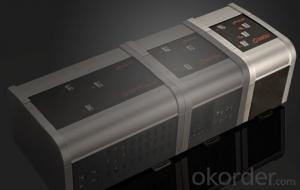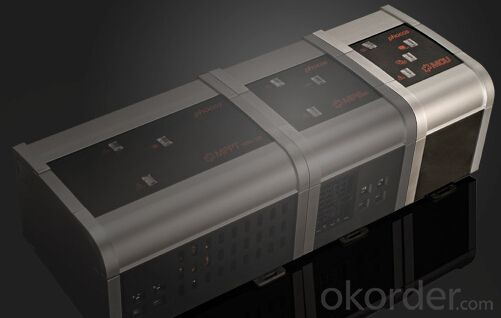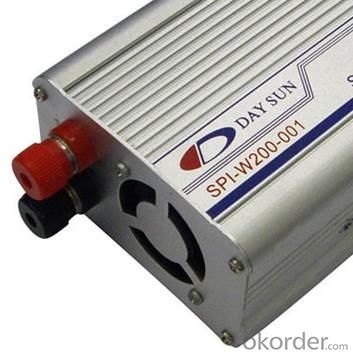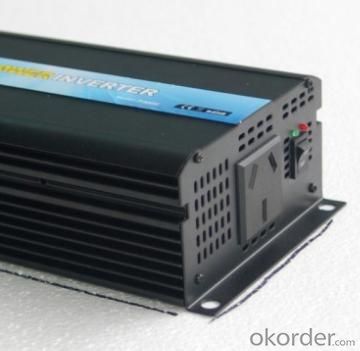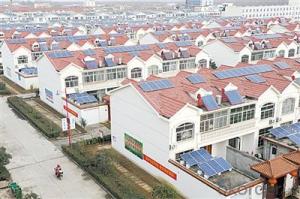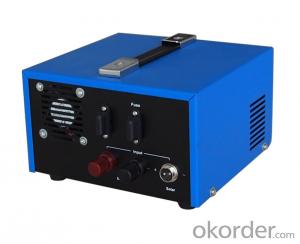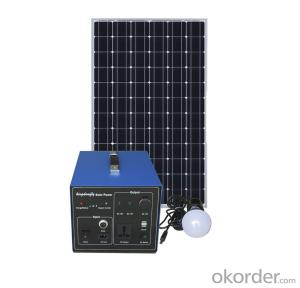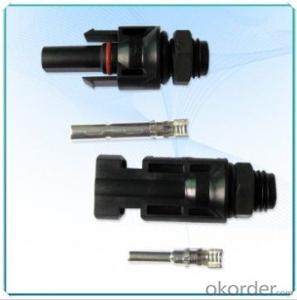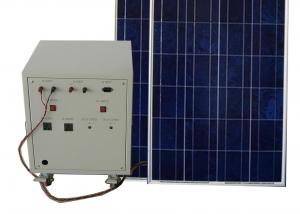Ses Solar Energy Systems Tunisie Solar MCU 2.0 Modular Central Unit with High Quality
- Loading Port:
- China Main Port
- Payment Terms:
- TT or LC
- Min Order Qty:
- -
- Supply Capability:
- 10000 unit/month
OKorder Service Pledge
OKorder Financial Service
You Might Also Like
1, Product desciption
Inverter circuits designed to produce a variable output voltage range are often used within motor speed controllers.
The DC power for the inverter section can be derived from a normal AC wall outlet or some other source. Control and feedback circuitry is used to adjust the final output of the inverter section which will ultimately determine the speed of the motor operating under its mechanical load.
Motor speed control needs are numerous and include things like: industrial motor driven equipment, electric vehicles, rail transport systems, and power tools. (See related: variable-frequency drive ) Switching states are developed for positive, negative and zero voltages as per the patterns given in the switching Table.
The generated gate pulses are given to each switch in accordance with the developed pattern and thus the output is obtained.
2, Features of the product
To do this, AC power is first rectified to provide DC power. The inverter then changes the DC power to high frequency AC power. Due to the reduction in the number of DC Sources employed, the structure becomes more reliable and the output voltage has higher resolution due to an increase in the number of steps so that the reference sinusoidal voltage can be better achieved.
This configuration has recently become very popular in AC power supply and adjustable speed drive applications. This new inverter can avoid extra clamping diodes or voltage balancing capacitors. There are three kinds of level shifted modulation techniques, namely:
· Built-in 1 year data logger for system analysis
· Charge and discharge status display
· Acoustic load disconnect pre-warning
· Load status indication
· Choose between 5 load disconnect algorithms
· Boost/absorption/float PWM-regulation (series type)
· Integrated temperature compensation
· Covered terminals (up to 16 mm2 wire size)
· Full solid-state protection
The first thing to figure out is the length of road in need of street lights.
This can be a small entrance road only a couple hundred of feet long to miles of streets through an area. Does the area currently have any type of lighting available.
What is the reason for needing street lights in this area
Is the electrical grid already nearby or would you need to call in the power company to bring in electrical lines.
If the electric needs to be brought to the area, how much is this going to cost? Depending on how far the grid electric is from the location of the needed lighting, this can be quite expensive.
How much lighting is needed on the street? Do the lights need to be dark sky compliant.
Do the street lights need to run from dusk to dawn or for only a specified number of hours at night.
Are the street lights able to dim in the middle of the night and still provide enough lighting.
These questions need to be answered before you can decide on how many lights you will need to complete the project.
3, Product Image
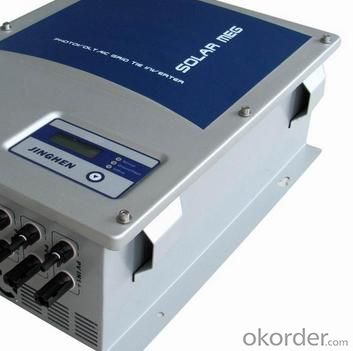
4, Detailed Specification
INPUT | |
Input voltage range | 185~265±5Vac |
OUTPUT | |
Output voltage range | 185~265±5Vac (AC mode) , 230Vac (DC mode) |
Output frequency (DC mode) | 50Hz (48~54Hz) or 60Hz(58~64Hz), same as AC(AC mode) 50Hz ±0.3Hz (DC mode) |
Wave form | Sine wave (DC Mode) |
Transfer time | 10ms. (Typical) |
BATTERY | |
Rated charging current (max.) | 45A |
Norminal DC input voltage | 12V |
Min. DC start voltage | 20V / 40V |
PHYSICAL | |
Unit dimension (mm) | 526*277*212 |
Master box dimension (mm) | 620*350*370 |
Net weight (1pc, kg) | 22.8 |
- Q: Can solar energy systems be used for powering public transportation systems like buses or trains?
- Yes, solar energy systems can indeed be used to power public transportation systems such as buses or trains. Solar panels can be installed on the roofs of buses or along railway tracks to harness sunlight and convert it into electricity. This renewable energy source can help reduce reliance on fossil fuels, lower emissions, and make public transportation more sustainable and environmentally friendly.
- Q: How do solar energy systems impact the reduction of energy transmission losses?
- Solar energy systems help reduce energy transmission losses by generating electricity directly at the point of consumption. This eliminates the need for long-distance transmission of electricity, which can result in significant losses due to resistance in power lines. By generating electricity on-site, solar energy systems minimize transmission distances, reducing energy losses and increasing overall efficiency.
- Q: Can solar energy systems be used in cloudy or rainy climates?
- Yes, solar energy systems can still be used in cloudy or rainy climates. While solar panels generate more electricity under direct sunlight, they can still produce energy on cloudy days or during light rain. However, the energy output may be lower compared to sunny conditions. Additionally, advancements in technology have improved the efficiency of solar panels in capturing diffuse light, making them more suitable for regions with less sunlight.
- Q: Can solar energy systems be used in powering amusement parks?
- Yes, solar energy systems can definitely be used in powering amusement parks. Solar power has become increasingly popular in recent years due to its numerous benefits. Amusement parks require a significant amount of energy to operate rides, lighting, and other facilities. By utilizing solar energy systems, parks can reduce their reliance on traditional energy sources and significantly lower their operational costs. Solar panels can be installed on rooftops, parking lots, or open areas within the amusement park to harness the power of the sun. These panels convert sunlight into electricity, which can be used directly to power various park operations. Additionally, excess energy generated during peak sunlight hours can be stored in batteries for use during cloudy or nighttime periods. The advantages of using solar energy in amusement parks are manifold. Firstly, it is a renewable and sustainable energy source, meaning it does not deplete natural resources or produce harmful emissions. This makes solar energy an environmentally friendly choice, aligning with the growing emphasis on green initiatives and reducing carbon footprints. Furthermore, solar energy systems can provide a stable and predictable source of power. Amusement parks often experience high peak energy demands during busy periods, such as weekends or holidays. Solar panels can easily handle these fluctuations and ensure a reliable power supply, reducing the risk of power outages or disruptions. Moreover, installing solar panels can enhance the overall image and brand of an amusement park. By demonstrating a commitment to sustainable practices, parks can attract environmentally conscious visitors and differentiate themselves from competitors. This can contribute to a positive public image and potentially increase visitor numbers. In conclusion, solar energy systems can undoubtedly be used to power amusement parks. Their ability to generate clean, reliable, and cost-effective electricity makes them an ideal solution for powering the energy-intensive operations of amusement parks. By harnessing the power of the sun, parks can reduce their carbon footprint, lower operational costs, and enhance their overall appeal to visitors.
- Q: How does solar energy impact the environment?
- Solar energy has a positive impact on the environment as it is a clean and renewable source of energy. By harnessing the power of the sun, solar energy reduces greenhouse gas emissions, air pollution, and dependence on fossil fuels. Additionally, it helps in conserving valuable resources and mitigating climate change, making it a sustainable and eco-friendly option for meeting our energy needs.
- Q: Can solar energy systems be used in powering art galleries or museums?
- Yes, solar energy systems can definitely be used to power art galleries or museums. In fact, utilizing solar power in these establishments can have numerous benefits. Firstly, art galleries and museums often have large spaces with extensive lighting systems, making them energy-intensive. Solar energy systems can provide a significant amount of electricity to power these spaces, reducing reliance on traditional energy sources and lowering operating costs. Moreover, using solar energy aligns with the environmental values often associated with art and culture. By utilizing clean, renewable energy, art galleries and museums can significantly reduce their carbon footprint and contribute to the global efforts in combating climate change. Solar energy systems can also provide a reliable source of power, especially during peak hours when galleries and museums typically experience high visitor footfall. Additionally, the installation of solar panels on the rooftops of these establishments can serve as a visual symbol of their commitment to sustainability and inspire visitors to adopt similar practices in their own lives. However, it is important to note that the feasibility of solar energy systems in art galleries or museums may vary depending on various factors such as the available roof space for solar panel installation, the geographical location, and the specific energy requirements of the establishment. Conducting a thorough assessment and feasibility study is crucial to determine the optimal size and configuration of the solar energy system for each individual gallery or museum. Overall, solar energy systems can provide a clean, renewable, and cost-effective solution for powering art galleries and museums, aligning their operations with sustainable practices while reducing their environmental impact.
- Q: Can solar energy systems power an entire home or business?
- Yes, solar energy systems have the potential to power an entire home or business. The size and efficiency of the system, as well as the energy requirements of the property, play a crucial role in determining if it can meet all the energy needs. With the right design and installation, solar energy systems can provide enough electricity for the entire building, while also reducing reliance on traditional energy sources and lowering carbon emissions.
- Q: Can solar energy systems be used in powering research farms or agricultural laboratories?
- Yes, solar energy systems can certainly be used to power research farms or agricultural laboratories. Solar energy is a clean and renewable source of power that can be harnessed through the installation of solar panels. These panels convert sunlight into electricity, which can then be used to power various equipment and facilities. Research farms and agricultural laboratories often require a significant amount of electricity to operate, including lighting, heating, cooling, and powering agricultural machinery. By utilizing solar energy systems, these facilities can reduce their reliance on fossil fuels and decrease their carbon footprint. Solar energy systems can be installed on the roofs of buildings or on open land near the research farm or laboratory. The amount of solar energy generated will depend on factors such as the location of the facility, the size of the solar panels, and the amount of sunlight received. However, with advancements in solar technology, even areas with limited sunlight can still benefit from solar energy systems. In addition to being environmentally friendly, solar energy systems can also provide long-term cost savings for research farms and agricultural laboratories. Once installed, solar panels have a lifespan of 25-30 years, requiring minimal maintenance. This can lead to significant savings on electricity bills, especially in rural areas where grid connectivity may be unreliable or expensive. Furthermore, solar energy systems can provide a reliable source of power, especially during periods of peak demand or power outages. By incorporating battery storage systems, excess energy generated during the day can be stored and used during the night or cloudy days, ensuring a continuous power supply for research activities. Overall, solar energy systems are a viable and sustainable solution for powering research farms and agricultural laboratories. They offer numerous benefits, including reduced environmental impact, long-term cost savings, and reliable power supply. As the demand for renewable energy continues to grow, integrating solar energy systems into agricultural facilities can contribute to a greener and more sustainable future.
- Q: Can solar energy systems be used for powering off-grid water treatment plants?
- Yes, solar energy systems can be used for powering off-grid water treatment plants. Solar panels can generate electricity to power the various components of a water treatment plant, such as pumps, filters, and disinfection systems. This allows remote or off-grid areas without access to a reliable electrical grid to still have access to clean and treated water through the use of solar energy.
- Q: Can solar energy systems be used for powering off-grid eco-villages?
- Yes, solar energy systems can be used effectively for powering off-grid eco-villages. Solar panels can generate electricity from sunlight, which can then be stored in batteries for use during non-sunny periods or at night. This renewable energy source provides a sustainable and environmentally friendly solution to power the various needs of off-grid eco-villages, including lighting, heating, and electrical appliances. Additionally, solar energy systems can be easily installed and maintained, making them an ideal choice for powering off-grid communities that prioritize self-sufficiency and reducing carbon footprint.
Send your message to us
Ses Solar Energy Systems Tunisie Solar MCU 2.0 Modular Central Unit with High Quality
- Loading Port:
- China Main Port
- Payment Terms:
- TT or LC
- Min Order Qty:
- -
- Supply Capability:
- 10000 unit/month
OKorder Service Pledge
OKorder Financial Service
Similar products
Hot products
Hot Searches
Related keywords
